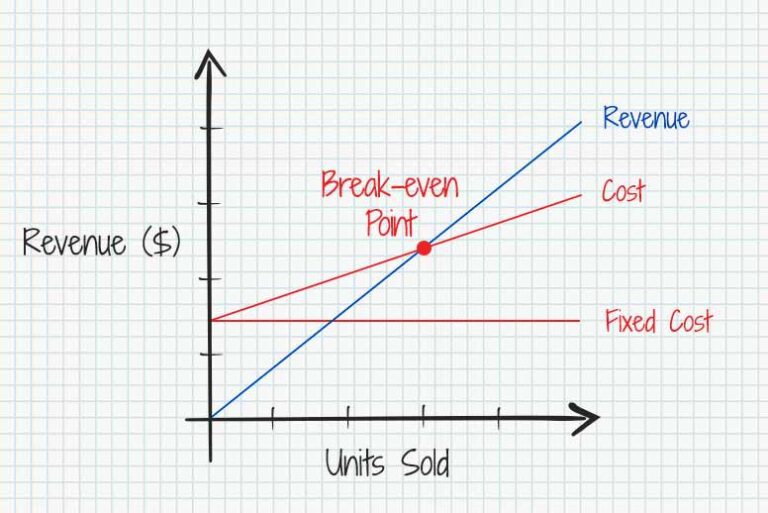How To Start A Handyman Business in 2025?

In this guide, we will help you with everything you need to know to start a handyman business: making a strong business plan, choosing your tools, legal requirements, setting your rates, and marketing your services.
Becoming a handyman business owner can be highly rewarding: it provides you the liberty to act as your own boss. You can also help others with their home repair problems.
If you are the person everyone calls to fix things, you can turn those skills into a successful business.
You’ve come to the correct article.
Let’s get into it!
Steps to Starting a Handyman Business
1. Create a Game Plan with Your Business Plan
Think of your business plan as your map to success. It outlines your goals, helps you stay organized, and sets the foundation for your business.
A well-thought-out plan is also essential if you plan to seek funding or attract investors.
What to Include in Your Business Plan:
- Your Service List: What jobs will you specialize in? Painting? Furniture assembly? Pick what you’re best at and what’s in demand in your area.
- Target Market: Who’s your ideal customer? Homeowners, landlords, or small businesses?
- Open a Business Bank Account.
- Budget & Funding: What will the startup costs be, and where will we source the money?
- Marketing Strategy: How will you get the word out about your business?
- Financial Goals: Set realistic rates, account for overhead costs, and aim for a healthy profit margin.
For example, of you’re in a suburban area with young families, tailoring your business plan to their needs can be a game-changer.
Alex in Austin identified a demand for services like childproofing, fence repairs, and furniture assembly in his community.
To capitalize on this, he partnered with local realtors and offered discounted repairs for new homeowners. This approach earned him steady referrals, establishing a reliable stream of clients for his handyman business.
They might also need fence repairs and help with furniture assembly. Tailor your offerings and marketing efforts to meet their specific needs.
RELATED ARTICLE: How To Price Handyman Jobs in 10 Steps?

2. Nail Down Your Budget and Funding
Starting a handyman business doesn’t require a massive investment, but you’ll still need some funds to get off the ground.
Typical startup costs range from $1,500 to $10,000, depending on the services you offer and whether you already own the tools you need.
Where to Find the Funds:
- Personal Savings: If you’ve got some money set aside, that’s a great place to start.
- Small Business Loans: Many banks offer loans tailored to startups.
- Grants: Some states and organizations offer funding for small businesses.
- Credit Cards: Use this as a last resort and only if you’re confident about repaying quickly.
For example, Sarah is a handyman in Ohio. She used her savings to buy essential tools and spent $200 on a DIY website. She also applied for a small grant from her local chamber of commerce, which covered her licensing fees.
To stretch her budget further, she negotiated bulk discounts for materials with local suppliers, reducing her costs by 20%.
For managing your business finances down the road, start small and reinvest your profits as your business grows. Tools like Reporting Software can help you track your revenue and expenses in one place, helping you to stay on track financially.
RELATED ARTICLE: Handyman Salary Guide in the United States (2025)
3. Make Your Business Official
To operate legally and professionally, you’ll need to register your business and check local requirements.
How to Get Started:
- Choose a Name: Make it catchy and easy to remember, such as Joe’s Handyman Solutions.
- Define a Business Structure: Individual business are the easiest option. However, you may want to think about an LLC (Limited Liability Company). An LLC can help protect your personal assets, like your home or savings, from business liabilities.
- Obtain a Business License, as most states require handymen to have licensing and insurance. This is especially true for special services like plumbing or electrical work. Drywall repair or fixture installation may be exempt of license and permit.
- Apply for an EIN: If you’re planning to hire employees, an Employer Identification Number is a must. This nine-digit number allows you to report employee wages, file taxes, and offer benefits.
For example, Joe in Chicago named his business “The Neighborhood Handyman”. This name highlights his local roots and foster a sense of trust with potential clients. It also immediately resonated with homeowners looking for a reliable, community-focused service provider—not just another generic handyman.
Pro Tip: When choosing a business name, check for trademarks and domain availability to make sure you don’t run into problems with it later.
4. Protect Yourself with Insurance
Even if you’re meticulous, accidents can happen. A customer might trip over your tools or your work vehicle could cause an accident. Insurance safeguards your finances and reassures clients that you’re a reliable professional.
Types of Insurance to Consider:
- General Liability Insurance: Covers injuries and property damage caused during your work.
- Commercial Auto Insurance: Protects your work vehicle.
- Workers’ Compensation: Required if you hire employees to cover workplace injuries.
For example, Mike in California pays $600 annually for general liability insurance. This came in handy when a client’s window cracked during a drywall repair.
Mike also created a checklist for every job to reduce the chances of accidents. And he added clauses in his service agreements to clarify his liability in certain situations.
RELATED ARTICLE: How To Get Your Handyman Insurance in 2025?
5. Define Your Services
Your service list is one of the first things potential clients will see.
Focus on what you do best and what people in your area need most.
Keep in mind, some types of services might require additional licensing or certifications, so check local laws before advertising them.
Popular Handyman Services:
- Painting and staining
- Drywall repair
- Fixture replacement (like faucets or light fixtures)
- Furniture assembly
- Minor plumbing and electrical repair
- Other odd jobs
For example, Emily in Seattle works on furniture assembly and curtain installations. These services are popular with renters in her area.
To stand out from competitors, she offers free estimates and same-day service options. She avoids plumbing or electrical work since they require additional certifications in Washington state.
Emily shows before-and-after photos of her projects on her website to help her clients see the quality of her work.
Together, her targeted services, quick turnaround, and visual proof hve made her a trusted go-to for renters.

6. Gather Your Tools and Equipment
Your tools are your bread and butter. Start with basic, versatile equipment, then add specialized tools as needed.
Essentials for Every Handyman:
- Power drill and saw
- Hammer, screwdrivers, and pliers
- Measuring tape and level
- Safety gear (goggles, gloves, and earplugs)
- Toolbox or tool belt
For example, Jason in Denver uses a Receipt Scanner to track his purchases for tax deductions. He recently invested in a high-quality cordless drill after securing a long-term contract with a property manager.
This strategic investment in reliable equipment allows him to deliver consistent, high-quality work while maintaining his professional reputation.
Pro Tip: Start with reliable brands that offer warranties to protect your investment in tools.
7. Set Your Rates with Confidence
Pricing your services can feel tricky, but it’s crucial to get it right. Your rates should reflect your skill level, market demand, and business costs.
How to Set Your Prices:
- Research Local Rates: Learn what competitors charge—$50–$80/hour is typical for most areas.
- Calculate Overhead Costs: Include expenses like tools, insurance, fuel, and marketing.
- Add a Profit Margin: Aim for 10–20% on top of your costs to ensure profit.
To encourage repeat business and create a reliable income stream, Carlos also offers package deals for recurring clients. He his monthly maintenance checks include services like inspecting plumbing fixtures, tightening loose hardware, and performing minor repairs.
By combining hourly rates, material markups, and package deals, Carlos has created a pricing model that works. It appeals to clients while maximizing his earnings.
Need help setting your rates? Tools like Estimate Generator can make the process easier and more professional.

Try our free handyman service calculator
Need help pricing your handyman services? Add in the details of your job, materials and overhead costs, and get a competitive price.
8. Market Your Handyman Business
Once you’re ready to roll, it’s time to find clients! Marketing your business ensures people know who you are and what you offer.
Simple Marketing Ideas:
- Build a Website: Online presence is important: Show off your services, rates, and customer reviews.
- Use Social Media: Platforms like Instagram and Facebook are great for sharing before-and-after photos of your work.
- Google My Business: Register here so people can easily find you online.
- Word of Mouth: Satisfied clients are your best promoters—ask for reviews and referrals.
For example, Lauren, in Texas, grew her client base by posting on a local Facebook group for her neighborhood. She started by introducing herself with a friendly post detailing her services. At the end of the post, she offered group members a 10% discount on their first job.
She frequently engaged in the group, answering questions about home maintenance, sharing DIY tips, and providing free advice. For example, her post on troubleshooting a jammed garbage disposal was a customer favorite.
She also ran seasonal promotions, such as Christmas light installations during the holidays and deck cleaning in the spring. Lauren not only gained new clients but also built strong, lasting relationships within her local community.
Tip! To stay organized, try using tools like Client Portal. This helps you access important client data. You can find information like revenue, estimates, invoices, items, and the number of jobs completed.

9. Deliver Amazing Customer Service
You want to make a difference?
Prioritize great customer service. Respond promptly, appear on time, and leave your job site cleaner than you found it.
Mark in Portland goes the extra mile. He sends personalized thank-you emails after finishing a job. He often includes a coupon for future services. This small touch keeps clients coming back.
Expert Advice: Use Speech to Invoice to immediately create invoices upon job completion. A time-saver your clients will appreciate.
10. Grow Your Team
As your business grows, you may need help to keep up with demand. Start by hiring part-time or contract workers, and expand from there.
Steps to Hiring:
- Create Job Descriptions: Be clear about what you’re looking for.
- Advertise Locally: Use online job boards or community groups.
- Train Your Team: Set expectations to ensure quality work.
For example, Alicia in Atlanta started by hiring her cousin part-time to help with painting jobs. As her business expanded, she hired additional contractors for busy seasons. Everyone she trained had to uphold her company’s quality standards.
Simplify Your Business with Handyman Software
Managing a successful handyman business doesn’t must be overwhelming. With the right tools, you can streamline your processes, save time, and keep clients happy.
Why Use Handyman Software?
- Generate Invoices: Use the Invoice Maker to create professional invoices in minutes.
- Use good-looking and professional Invoice Templates
- Track Payments: Stay on top of billing with Online Payments.
- Time Tracking: Monitor your hours worked with Time Tracking Software.
- Manage Clients: Keep everything organized with a Client Portal.
Ready to get started?
Try out our Software made for Handyman Businesses and see how it can simplify your workflow and make your business thrive.
Download Invoice Fly today!

Jennifer is a skilled senior copywriter with over 10 years of experience in content strategy, creative, and UX writing and other digital marketing disciplines.
Her work prioritizes clarity and conversion optimization (CRO). The approach is deeply rooted in branding, where she crafts compelling narratives and drives unique and meaningful engagement.
Born in Minnesota, North America, she has deep industry knowledge and experience creating content about banking, accounting, travel, food, SaaS products and mobile apps, as she has work for companies such as Ogilvy, Design, Juni and Qustodio, among many others.



